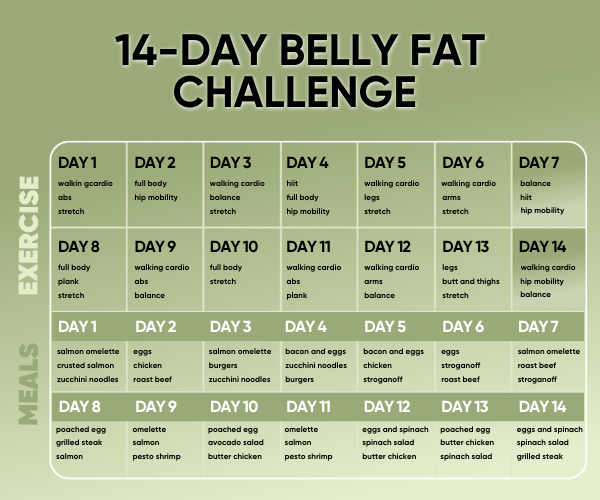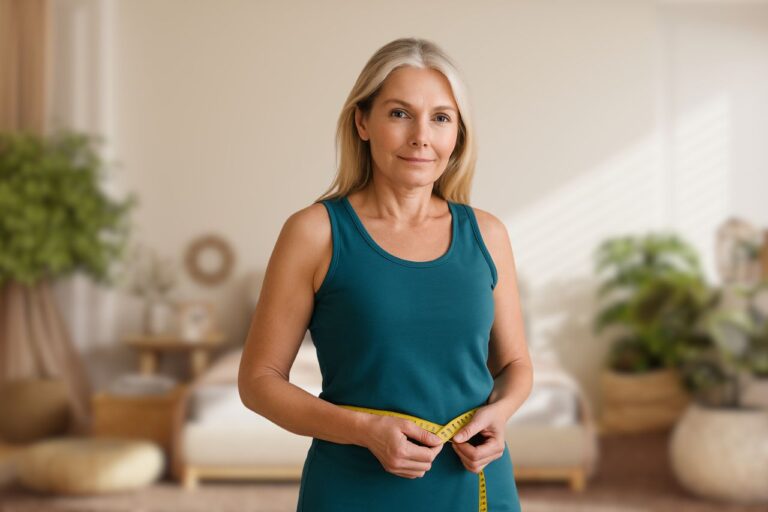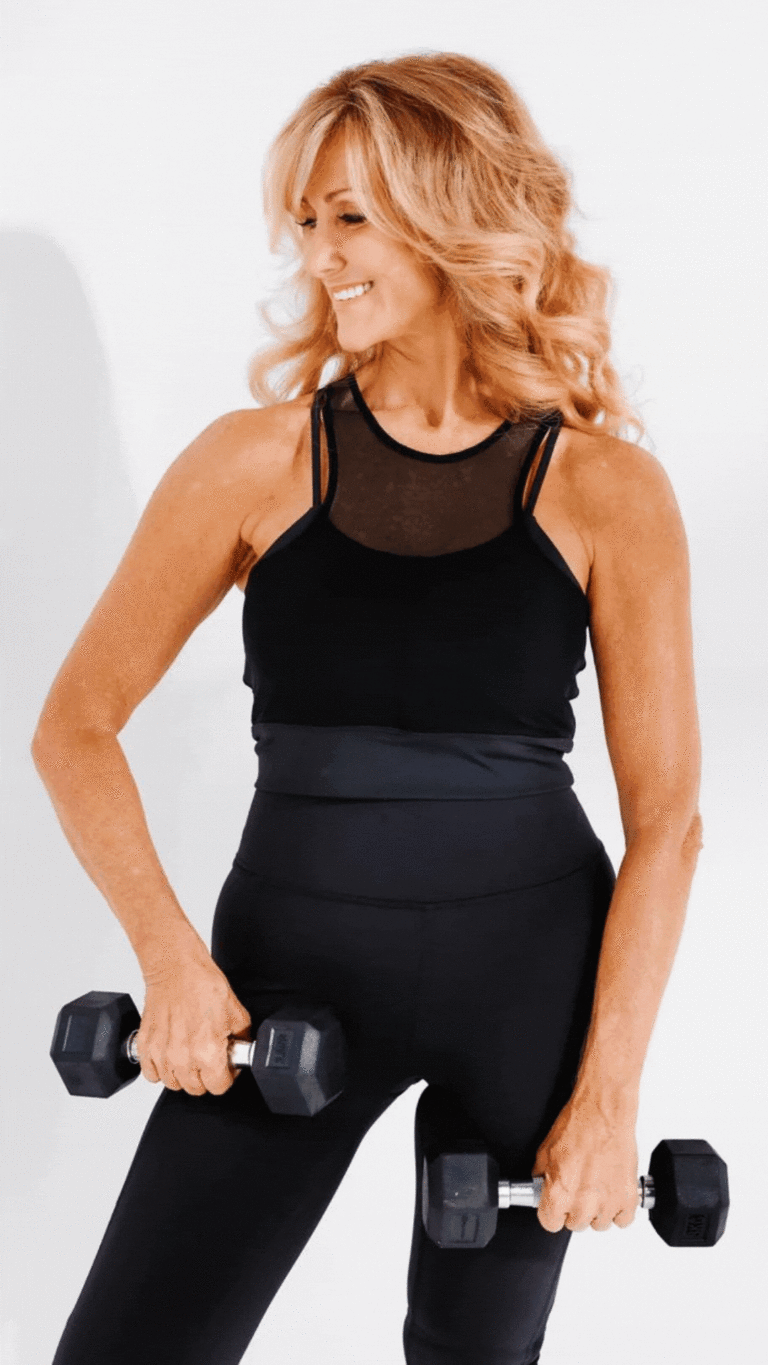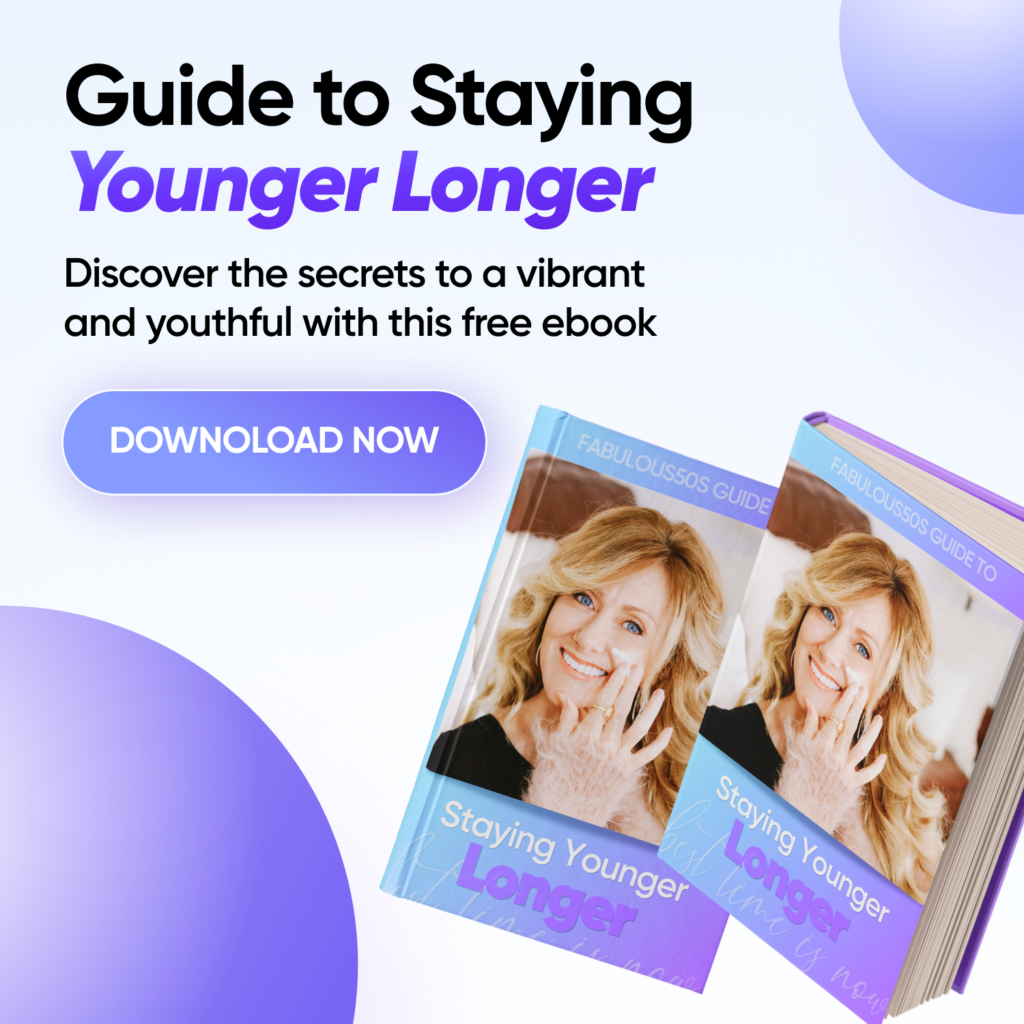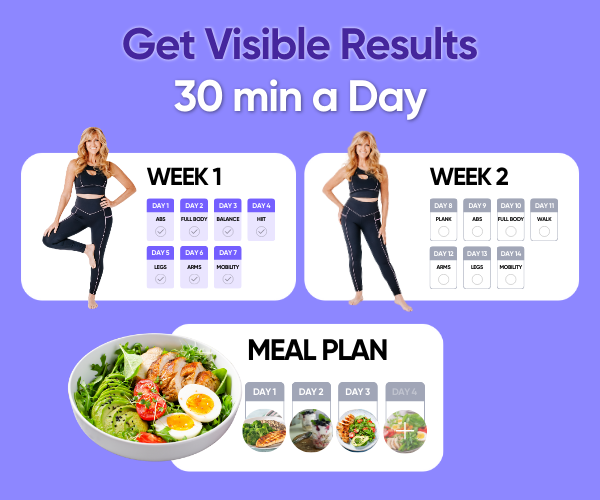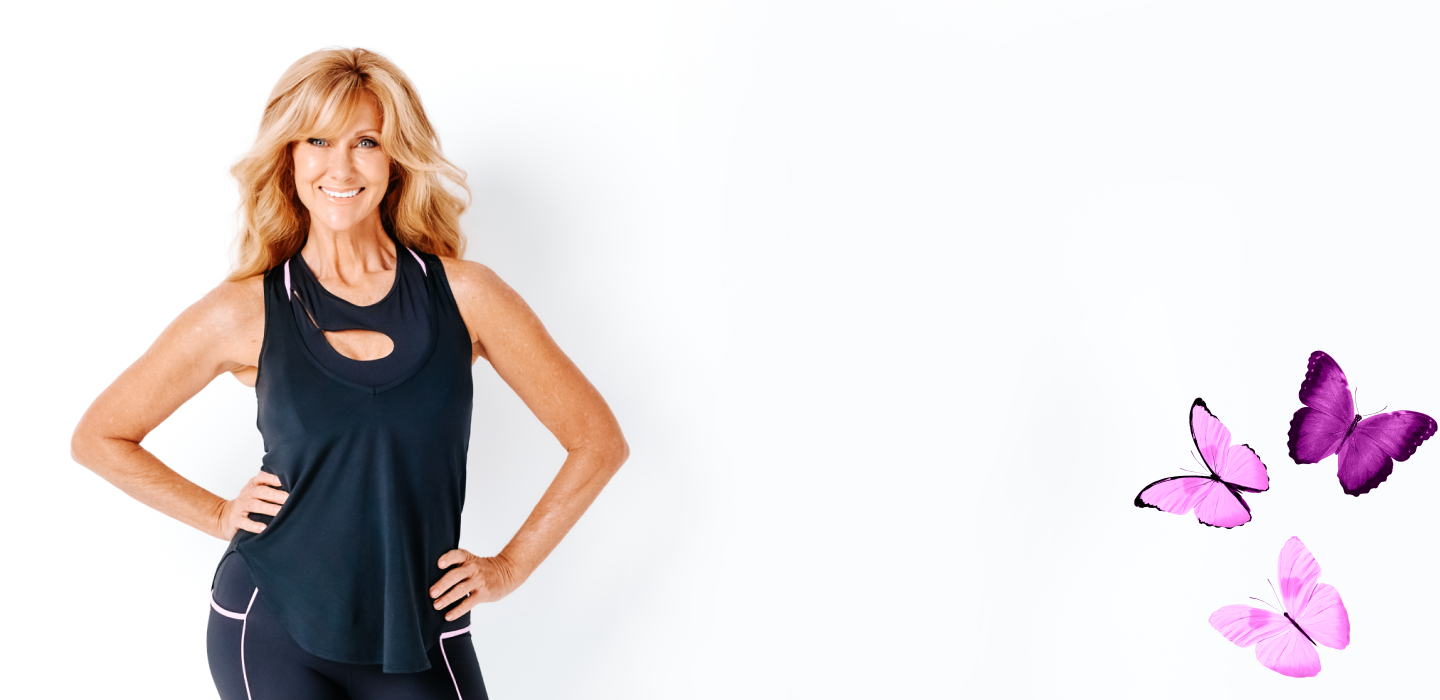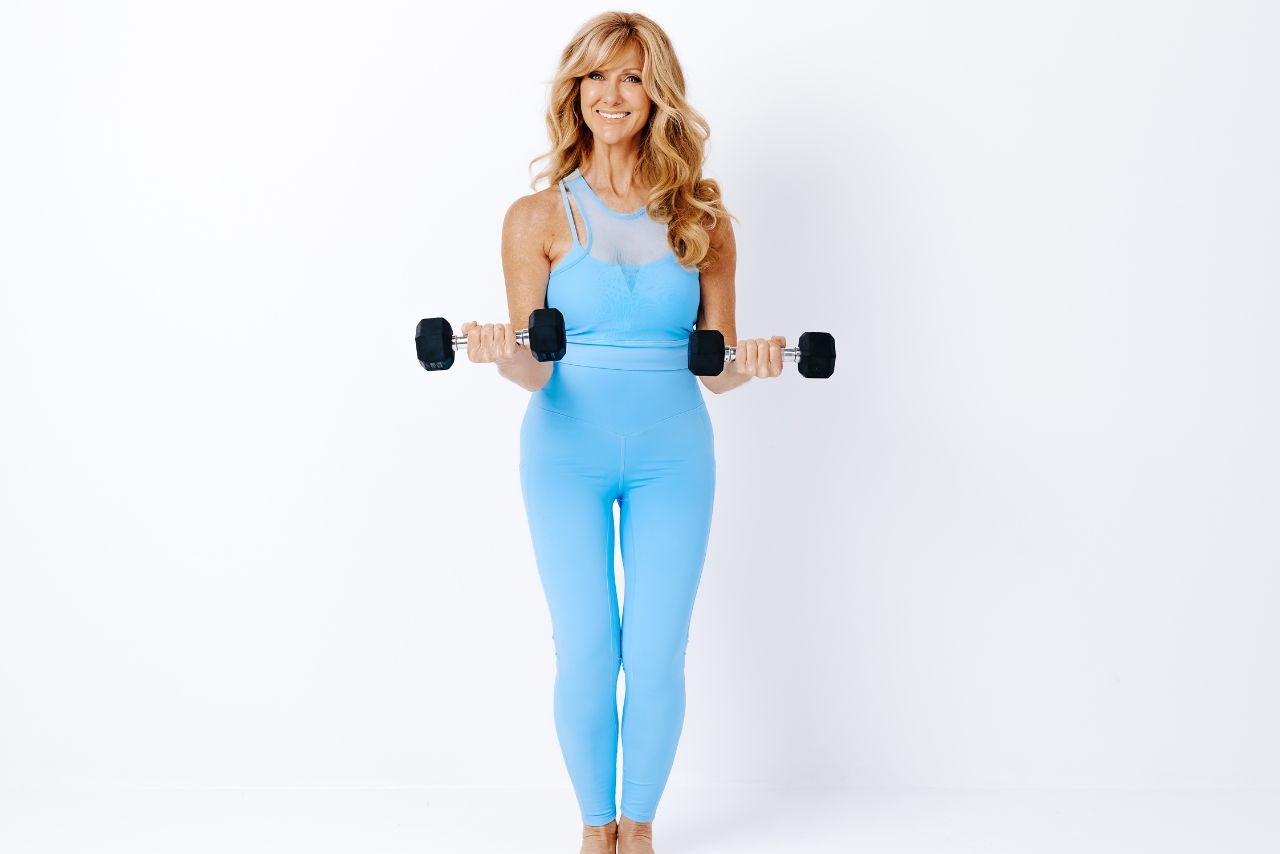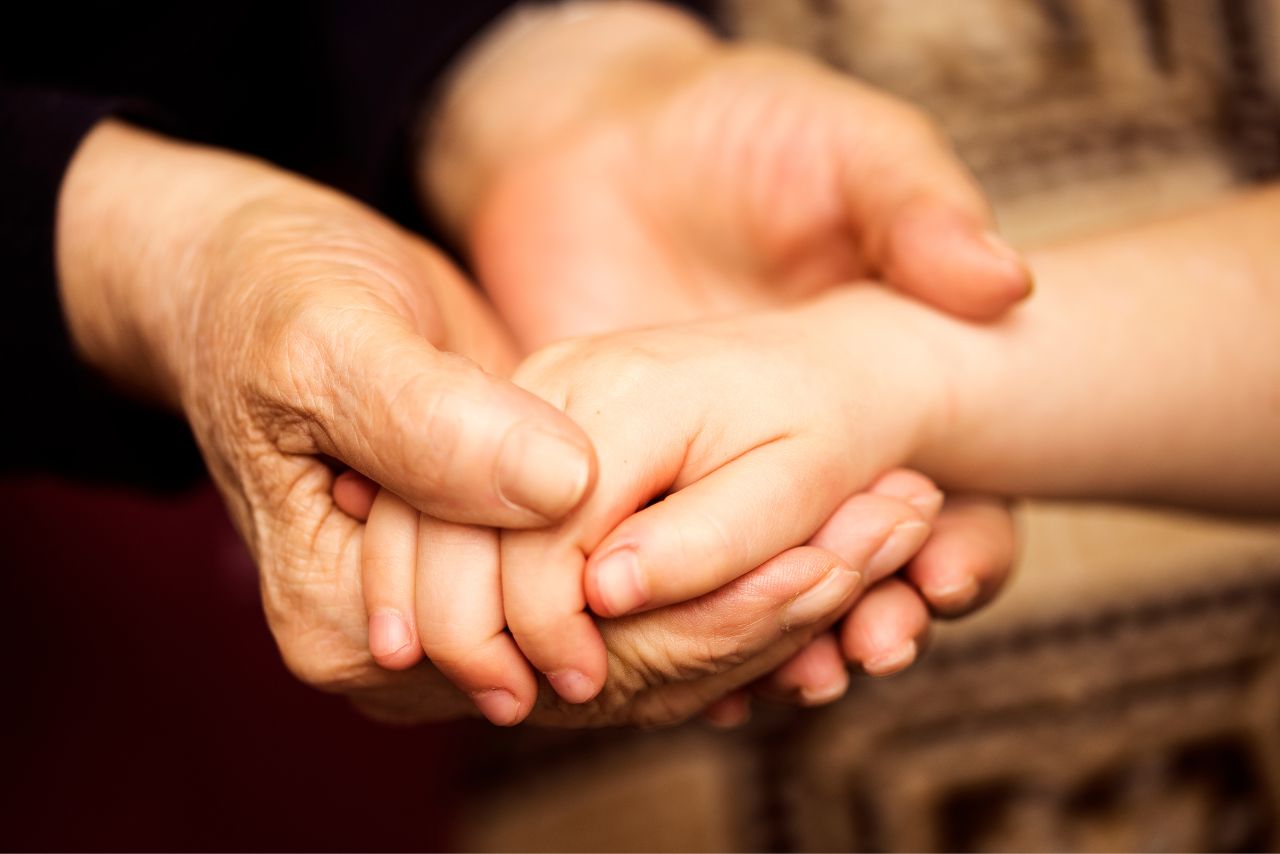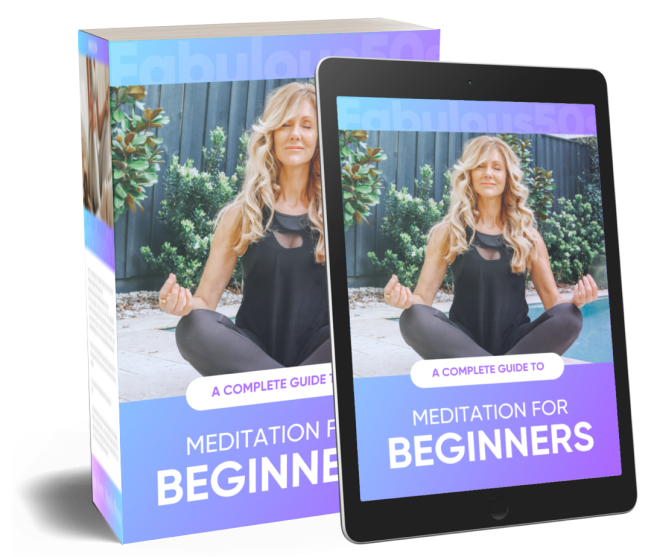
Midlife invites reflection. We look around familiar rooms and realize our hearts carry as many keepsakes as our cupboards.
Sometimes I picture my heart like the attic of my old country cottage with its sun-dusted beams overhead, the scent of lavender in the air, and boxes tucked into corners that I haven’t opened in years.
Inside those boxes live forgotten promises, handwritten letters, and the quiet ache of moments that never found their tidy endings.
Going through them all can be hard, but that’s what emotional decluttering for women is all about. You have to think about each memory and decide if it still makes you feel good or if it’s just collecting dust.
Emotional decluttering is important for women at the point when kindness turns to tenseness and memories of the past start to crowd out the present.
So, let’s explore what emotional decluttering is all about, how to name what bothers us, and how to make room for a lighter life.
What’s Emotional Decluttering For Women Over 50?

Objects gather dust; emotions gather inertia. Feelings of regret, unresolved grief, and old stories lie dormant until a song or smell wakes them up.
Emotional decluttering for women over 50 is the process of identifying, acknowledging, and intentionally releasing emotional baggage that no longer serves them, leading to greater peace, clarity, and well-being in this stage of life.
It’s about consciously getting rid of hurts, regrets, limiting beliefs, old roles, and unhealthy emotional patterns that may have built up over many years.
For women over 50, emotional decluttering means carefully choosing what to keep in their inner world so that it fits with who they are now and who they want to be. This helps them enjoy their later years with more joy, purpose, and emotional freedom.
The act of doing it is self-care and gives you power.
The Gentle Art of Letting Go
Letting go sounds dramatic, but it can be as modest as a breath. Try this small ritual whenever emotional clutter surfaces:
- Close your eyes and locate the feeling in your body—tight chest, heavy belly, tense jaw.
- Name the feeling (“disappointment,” “loneliness,” “fear”).
- Inhale slowly through the nose, counting four beats.
- Exhale longer than the inhale, picturing the feeling drifting outward like smoke.
- Repeat five cycles, reminding yourself that each departure creates room for something kinder.
If you do it every day, emotional decluttering will become as normal to you as brushing your teeth, but it will feel so much better.
How Much It Costs to Hold On

Cluttered feelings are stealthy spenders. They borrow our concentration during yoga, steal sleep, and stiffen shoulders.
Research has linked long-term emotional stress to high cortisol levels and heart stress in women over fifty. Decluttering your space physically frees up room, and for women, decluttering our emotions emotionally frees up energy.
When we stop thinking about past disappointments, decision fatigue goes away. For example, a walk in the evening, a colorful salad, or just laughing out loud can become healthier habits once the mind has space to notice pleasure.
Research links chronic emotional load to higher heart risk and slower healing in women beyond midlife. Once you stop replaying disappointments, evenings open for sunset walks, playful phone calls, vibrant salads, and unchecked laughter.
Here’s a Guide to Emotional Decluttering For Women Over 50
Emotional decluttering for women means honoring the chapters that shaped us, then setting limits on what we carry forward.
This guide came about after many tea-time conversations with friends who felt like they had too many things to do, like taking care of aging parents, supporting adult children, and still being there for their partners, careers, and communities.
It was a quiet truth that came out in every story: cleaning up your inner space is just as important as organizing your closet. When we breathe more steadily and talk more kindly to ourselves, we can find energy that was buried under layers of should-haves and what-ifs.
So, here’s your guide to emotional decluttering after 50;
Map Your Personal Triggers
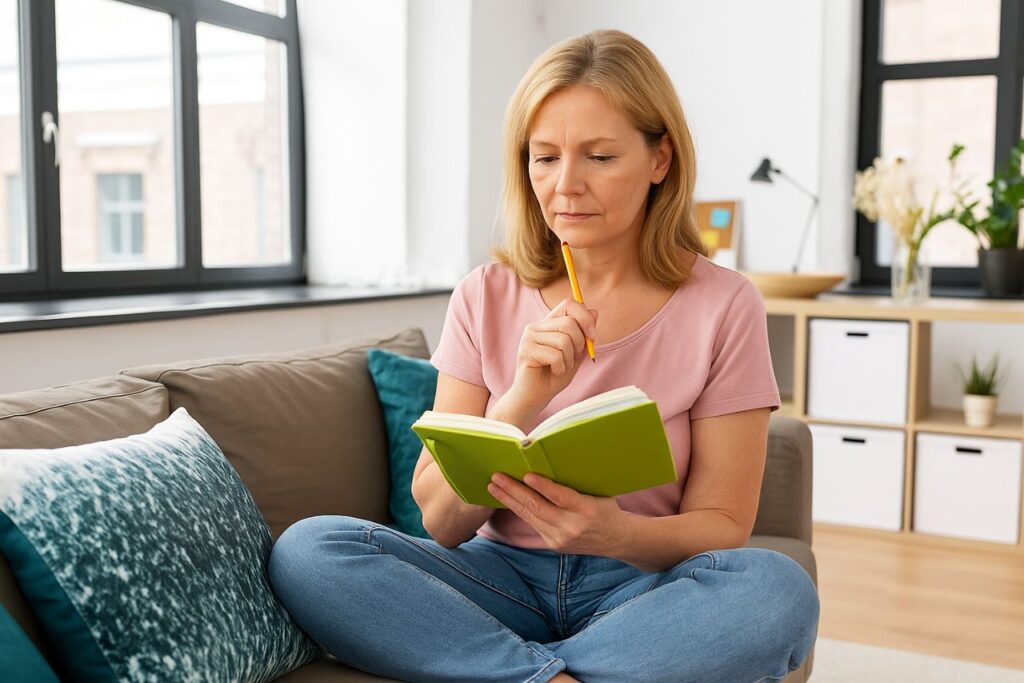
The more birthdays we have, the more stories we have to tell, and sometimes those stories make us feel tense in ways we didn’t expect.
Mapping your personal triggers is a gentle, detective-style exercise that helps you understand what sets off stress, worry, or emotional discomfort so you can respond rather than react.
Here’s a practical, four-step approach designed especially for women over 50.
1. Start a “Trigger Journal”
For two weeks, keep a small notebook (or a notes app) nearby. When you feel a sudden change, like your heart beating fast, your mood dropping, or your shoulders tensing up, write down:
- What happened? (the event, conversation, or thought)
- Where were you? (physical setting)
- Who was involved? (people present, if any)
- How did your body react? (tight chest, headache, flushed cheeks)
- What emotion surfaced first? (anger, sadness, anxiety, shame)
Writing these snapshots in the moment captures details memory tends to blur later. Over days, patterns will begin to show themselves like constellations in a clear night sky.
2. Colour-Code Your Patterns
Once you have a week or two of entries, assign colors or symbols to common themes:
- 🔵 Blue dots for interpersonal triggers (criticism, feeling dismissed)
- 🟢 Green stars for environmental triggers (crowds, clutter, loud noise)
- 🟡 Yellow triangles for internal triggers (negative self-talk, perfectionism)
Lay your notes out on a table or digital spreadsheet. Clusters of the same color point to your biggest hot spots.
A lot of women over 50 find that roles they’ve had for a long time, like caregiver, mediator, or perfectionist worker, still make them feel old. When you see them mapped out, they become clearer without any judgment.
READ ALSO: Mindful Living: How To Create a Loving Lifestyle After 50
3. Trace the Root Story
Choose one recurring trigger and dig a little deeper:
- Recall early memories related to that feeling. When did you first learn that “mess equals failure” or that “speaking up causes conflict”?
- Name the rule you subconsciously follow (e.g., “I must handle everything alone”).
- Test its truth in your current life. Does this rule still serve the confident, wiser woman you are today?
Root-tracking transforms a vague irritation into a specific narrative you can edit or discard.
4. Craft a Calming Protocol
For each major trigger, pair an if-then plan:
- If my sibling’s tone turns sharp, then I’ll take a slow breath, say “Let’s pause,” and revisit the topic later.
- If a cluttered workspace spikes my anxiety, then I’ll set a five-minute timer to clear the surface before I start work.
It’s helpful to have things that calm you down quickly, like music, a favorite scent, or a short walk. Stick these rules on the lock screen of your phone or a note next to the kettle so you can find them quickly.
This is something I do every week because it helps me clear out my emotions and changes the way I remember things from reacting to them to reflecting on them.
READ ALSO: Is Anxiety Sneaking Up on You? Here’s How to Calm Your Mind Naturally
Build a Safe Place Inside

When your heart is clear, it wants to be fed, not numb. Creating rituals from the heart protects the clean space we earn. Emotional decluttering for women is sustained when daily routines embody stillness rather than speed.
Every regular habit you have now, like mindful morning stretches or water sips, adds another layer of comfort.
When you feel stressed, think about that anchor moment. Closing your eyes and breathing in its warmth will teach your nervous system how to quickly find peace, even when life is crazy.
Set clear boundaries and talk to yourself with kindness to make the space stronger. A simple, confident “That doesn’t work for me” shuts off demanding requests, and a small journal of daily gratitude fills the space with comfort.
Say to yourself, “Rest is my right, and I did the best I could today.” Over time, the safe place becomes portable, ready to calm you down at any time, even when you’re with family, at a meeting, or just by yourself in the evening.
READ ALSO: 10 Ways Women Over 50 Can Practice Self-Love in Everyday Life
Safeguard Your Heart

Decluttering is something that people do all at once, but staying clutter-free takes work every day. A cottage garden is a good analogy for this: once you get rid of the weeds, regular watering and light pruning will keep the flowers healthy.
That ongoing care, or “guardrails,” keeps you from falling into yesterday’s good intentions when they’re trying to clean out your emotions.
How do you establish guardrails? You can do this through:
Boundary Phrases: When conversation edges toward a raw spot, a calm “That topic feels tender; let’s revisit it another time” honors both your feelings and the relationship.
Support Circles: These are your trustworthy friends or counselors who remind us of progress.
Seasonal Reviews: Maybe every equinox, where you spend a quiet morning writing down any changes in your mood, focus, or life direction. With these easy practices, you can keep your heart clear and free, making emotional decluttering a way of life instead of just a one-time thing.
READ ALSO: Decluttering After 50: Tips To Help You Stay Organized
Closing Thoughts
As we reach middle age, we can see a big picture of our lives. Behind us are the lessons we’ve learned the hard way, and ahead are new opportunities.
Emotional decluttering for women transforms that view from cluttered attic to sunlit studio, where each memory is displayed with pride instead of piled in a dusty box.
Love each memory with care, let your longing lead you to a purpose, and watch over your open heart like it’s a precious garden.
Wishing you a heart as open as the sky when the sun goes down, ready to welcome the light of tomorrow without any burdens and fully alive.

